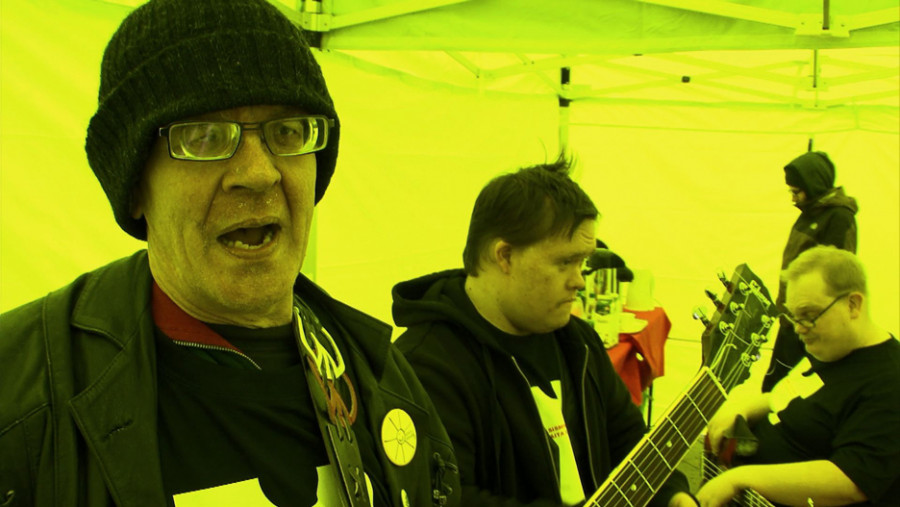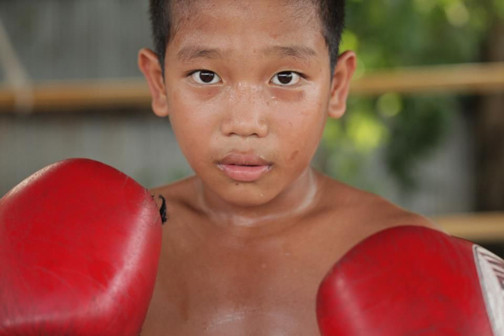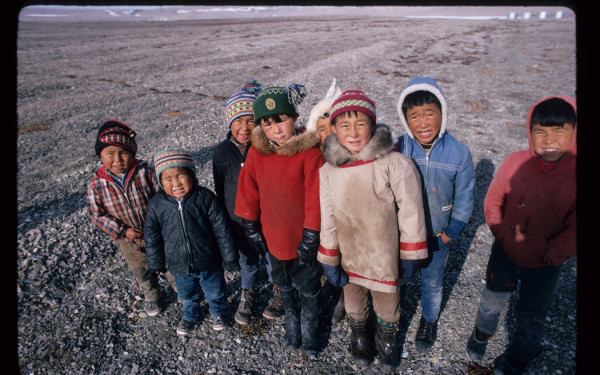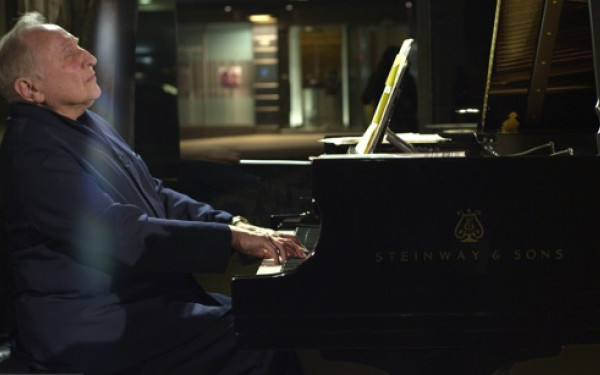The Montreal International Documentary Festival
Reviews From the Doc Fest - On Now
The Montreal International Documentary Festival (RIDM) is back and running right now. It promises to bring “the year’s best documentaries and films on subjects that matter.”
From films about the Occupy movement and the Printemps Erable, to stories about dictatorships and the military presence in Afghanistan, RIDM keeps Montreal supplied with the choice picks from the quickly growing documentary film genre.
Below are some reviews of films on offer. Screenings are at Cinema Excentris, the Grande Bibliotheque and Concordia’s Hall Building.
Montreal International Documentary Festival at various cinemas / to Nov. 18 / $11 regular, $9 students or 5-ticket pass $45 regular, $35 student
Les poings de la fierte (The fists of pride)
Produced by Hélène Choquette
Two young boys enter a town hall arena. Accompanied by their coaches, the boys strut out bandage-wrapped fists, anticipating for a wild battle of winner-take-all. The crowd goes wild. The bell rings. And the battle begins—all for a coveted cash prize that the kids can’t even have for themselves.
Hélène Choquette’s documentary brings us into a picturesque yet dangerous village that lies on the border of Burma and Thailand. Choquette visits a boxing camp for young boys—as young as seven years old—who escaped Burma, and are trying to establish a new life.
Unfortunately, the only way of life for these children is boxing.
The story follows the trials of these four young boxers—nicknamed Tiger, Lion, Little Tiger and Leopard—in how they cope up with the harsh realities of having little hope for their lives other than surviving in a training camp managed by a former policeman.
The documentary explains why they can’t get a proper education and why, despite pulling all these punches, they never get the monetary compensation they deserve.
It’s heartbreaking and tough to watch. But it kind of makes you so proud of these kids who fight for themselves at such a young age that you almost end up cheering for them—hence the title.
Presentation-wise, the story unfolds on its own with no narrator voice-overs. The dialogue between the characters are completely in their native languages, with only French subtitles. If you speak Thai, Burmese (or even the Karen dialect) or can read French, then it will be easy to understand the context.
It’s a fascinating watch to understand how a certain sport is played in a different social context.
—S.D.L.A.

Occupy Love
Produced by Velcrow Ripper
In the midst of so much political, social and environmental turmoil, producer Velcrow Ripper asks: “How could the crisis we’re having become a love story?”
That’s what this growing social movement—the Occupy movement—is all about.
Occupy Love speaks beyond the message it aims to deliver.
This documentary stitches together raw footage and interviews Ripper filmed during his time covering the events of Occupy Wall Street in New York, with interviews of various authors throughout the social and geographical spectrum. Ripper also explains how this has grown into an international movement that’s making waves around the world, citing similar collective social movements in Spain, Bolivia and even here in Quebec.
What makes this cool to watch is how Ripper frames the movement in such a welcoming way that’s not usually seen in mainstream media. It aims to inspire, educate and give viewers a clear understanding of what’s been going on in the world and what’s in store for us. The narration and execution unfolds in such a manner that it prompts viewers to think.
I definitely recommend checking this out because it’s not just about politics or the environment, but rather whether the 99 or 1 per cent is right. It discusses how we all need to change the way we interact with people right now, and how we can change the status quo.
Occupy Love is an invitation to look at ourselves and realize that despite the differences and conflicts we all have, we all collectively need to become proactive and love one another by supporting everyone. This documentary is highly motivational.
The message is clear. Ripper has captured history in the making in such an appealing way. I loved it. The music that was used was a huge plus too. —S.D.L.A.

Charles Bradley: Soul of America
Produced by Paoull Brien
It’s better to be a late bloomer than to have never bloomed at all.
This goes the same for Charles Bradley’s immense passion for music as the only known 60-something to release an R&B album that broke records with No Time For Dreaming.
Filmmaker Poull Brien does an amazing job capturing the life of the former James Brown cover singer’s transformation from a nobody struggling through the cruel realities of life in the projects of New York, to an aspiring rhythm and blues superstar.
From his after-party hugs with the stage crew to his goosebump-inducing screams, you can almost just call him a sweet angel for all of the immensely great things he has done for his friends and especially for his mom, as seen in the documentary.
For the music aficionado, this is quite a feast. For the docu-addict, this is definitely a great execution of cinematography.
And for me who has just discovered his music and his entire life in the hour-and-a-half biography—his was a tearjerker. But with his infectious smile and loving personality, the sadness just goes away.
His love of people is paramount and contagious and his story is beyond uplifting. Whether you’ve heard of him or not, this doc is worth seeing.
—S.D.L.A.

The Punk Syndrome (KOVASIKAJUTTU)
Produced by J-P Passi and Jukka Kärkkäinen
The Punk Syndrome transcends linguistic barriers and challenges social misconceptions towards disabled people in a very fun and engaging way, letting the camera narrate the story itself.
Kari, Pertti, Sami and Toni are the punk rock band Pertti Kurikka’s Name Day, and they’re one of the most famous musical acts to ever come out of Finland.

The everyday reality the bandmates face as mentally-disabled people is tough, yet the band vents their frustrations so well by writing simple yet blunt lyrics. But don’t let their looks and mannerisms deceive you. When these talented musicians hit the stage, they take command of the space with ease.
These young musicians capture the spirit of punk rock at its most raw. It’s not the stereotype of aggressive young men wearing eyeliner and screaming uncontrollably onstage—it’s boldly defying the naysayers who judge mentally disabled people.
As one band member put it, “I believe everyone has the right to make a decision of what to do in their life.”
Their decision was to pick up the guitar and make music instead of staying in an enclosed mental facility.
This documentary sends a strong message that makes watching it empowering and fun at the same time. I recommend this film to anyone. It is challenging to present the realities of mental illness in a very engaging and fun way but filmmakers Passi and Kärkkäinen did a great job pulling this off.
—S.D.L.A.

Figure of Armen
Produced by Marlene Edoyan
All is not well in post-USSR Armenia. After a shattering late-1980s earthquake and during continuous social strife among the Turks, Azeris and other cultures, Armenian families settle on borderline villages, where young adults fly to places as far as Moscow in hopes of a better life, and townspeople—especially those old enough to have lived in the Soviet era who yearn for “the good old days” aren’t happy at all with the status quo.
It may not be a happy vacation postcard to bring home, but as filmmaker Marlene Edoyan creates in Figure of Armen, it’s a beautiful cinematic marvel not just to witness the beauty of the caucasian region, but as a reflective eye-opener. It helps the viewer understand the pulse of the Armenian people.
This documentary has a great approach of letting the people tell their story for themselves. As the narrative unfolds, it’s surprising what stories they tell with the camera rolling—at times it’s even heartbreaking.
The language doesn’t matter; with French-language subtitles superimposed over raw footage completely in Armenian, it is an emotionally riveting documentary for anyone who has left their homeland—or for those curious of what that experience entails.
—S.D.L.A.

EX PRESS
Produced by Jet Leyco
EX PRESS is probably the most eerie, cinematic and aesthetically pleasing documentary film I’ve seen yet at this year’s festival.
This is not for the faint at heart or for the impatient. Viewers really have to sit through something like this to absorb the story.
The documentary gives us a ride aboard the Bicol Express, an aging commuter train service that travels from a foresty rural township to The Philippines’ capital, Manila.
Leyco weaves together first-hand personal accounts from various people who live their lives on this train—folks involved with a railway guard’s mass-shooting, or forced relocation of illegal settlers on the rail tracks and commitments of personal vendetta.
The film’s execution of events feels like you’re a detective trying to connect the dots. Add to that the heavy use of on-train footage, this film compels you to think. Leyco presents this in an authentic fashion with the feel of an indie film. It’s so realistic that you won’t be sure it’s done once you get out of your chair.
—S.D.L.A.

La Chica del Sur (The Girl from the South)
Produced by Jose Luis Garcia
La Chica isn’t just a documentary about a girl’s desire for reunification in the Korean Peninsula. This is about Lim Sukyong, a young lady who made headlines in the late ‘80s as she sneaked in to the North to attend a youth conference.
Dubbed as the “Flower of Reunification,” she made a bold move to gather students and empower them to fulfill her simple wish to unite North and South Korea. Garcia heard about her while visiting Pyongyang.
La Chica is also a story of a filmmaker deeply fascinated with the charm and charisma of this former young social activist-turned teacher/journalist. You can hear Garcia’s enthusiasm and respect for Lim Sukyong throughout the film—so much that when she gets interviewed, you can hear her frustration to even wonder why Garcia is so interested in talking to her. There’s a specific cutscene that just does that, where all language and cultural barriers are broken.
Narrated in Spanish with English subtitles, La Chica is an interesting and inspiring documentary.
—S.D.L.A.

Letters from Pyongyang
Produced by Jason Lee
Another doc about Korea, this is a journey to reunite with a long-lost family.
This half-hour documentary is rich in facts. Filmmaker Jason Lee gives us a walk through of what the Korean Peninsula has historically been through, and helps us understand the effects of the Korean War in separating families apart.
Lee narrates his personal experience with his dad as they find their missing kin—with a collection of letters they’ve received from their relatives in the North as their only clue.
Letters gives us a personal, first-hand account of what Pyongyang’s cityscape looks like today, all while being under intense surveillance by state guards.
It’s breathtaking and beautiful in terms of its audiovisual presentation. The scenery alone gives you a feel of appreciation for what the people there are going through, from the ways they live to the ways they interact.
A fascinating and educational documentary, I recommend watching it for the sake of learning and understanding. It’s a refreshing perspective from all of the negative exposure the country faces.
—S.D.L.A.


Room 237
by Rodney Ascher
How big of a Stanley Kubrick fan are you? Any fan who hasn’t experienced Rodney Ascher’s Room 237 yet doesn’t know true fandom. Ascher interviews five Kubrick obsessives, or ‘Shiningologists,’ and creates a collage of five theories based around an “inquiry into The Shining.”
This documentary could have been as languid as a bonus feature of expert talking heads, but ends up a labour of love for cinephiles and Kubrick enthusiasts alike.What makes this documentary work so well and avoid the trap of academic boredom is the humour it has with its subject matter. It’s a tricky balance and three techniques are used to ensure it. First, no talking heads.
The interviewees are never seen, only heard. Moments of forgetfulness or interruptions create a spot-on casualness that serves this project well.
Second, scenes from Kubrick’s other films are used as illustrations for what would otherwise be arbitrary set-ups. The best example begins the whole thing: Tom Cruise’s Bill Harford (from Eyes Wide Shut) is walking in New York and stops by the Sonata cafe, looks at the playbill and sees the poster for The Shining. Bill Blakemore introduces his hypothesis that the film is really about Native American genocide, and Bill walks inside, to watch The Shining. These tricks of superimposition are all over Room 237.
Finally, there’s re-enactment footage of audience members watching The Shining, with interest or confusion depending on what the interviewee is describing, that are great comical snippets.
Some of the theories thrown around are harder to swallow than others, but every single one is worthy of examination, and what’s wonderful is that there are no right or wrong answers. Kubrick is no longer around to answer any questions—as if he would have anyway—so what the doc ultimately asks is that the audience listens to the evidence, decides what makes most sense, and watches Kubrick’s films again.
The Overlook Hotel is dissected to reveal an unsolvable puzzle of architecture, scenes that seemed inconsequential suddenly hold a whole new level of interest because of a window, a chair, a can of baking powder or a poster in the background. The underlying concept is the idea that the author’s intent is only one part of a work of art, and Kubrick was infamous enough as a perfectionist and brainiac to make anyone think twice about every subliminal message he presented.
Ascher’s delightful inquiry is a gift to fans of synchronicity, symbolism, Kubrick and the wonders of filmmaking.
—N.G.

Leviathan
by Verena Paravel’s and Lucien Castaing-Taylor
The word-of-mouth for Verena Paravel’s and Lucien Castaing-Taylor’s film has been strong from the get-go as it sailed its way through the festival circuit, finally making a stop at Montreal’s RIDM where it won the prize for Image and Sound. The film documents the nights and days of a group of deep-sea fishermen. Studying every review still won’t give the viewer any idea what this film is really about.
Leviathan is the sea monster described in the Book of Job, “On earth there is not his like, a creature without fear,” (Job 41:33).
But Leviathan is not the name of the ship that Paravel and Castaing-Taylor use for their voyage, which asks the question: who or what is the Leviathan? Is it the cruelty shown towards our creatures of the sea? The overwhelming boredom that ticks off the minutes, one hour at a time, and lulls the workers to sleep? The engulfing darkness under which most of the labour is done?
Ultimately, the question is left for the viewer to answer, depending on what peculiarity speaks to them the most.
Beyond the ‘why,’ the reason Leviathan will end up as one of the best films of the year is the ‘how’–its phenomenal camera work and use of sound. From the moment Job’s words fade away into the darkness, the sounds of the ship bring to mind an industrial beast. And that’s where the camerawork comes into play. The camera frantically shakes, following the rhythm of the boat as the view sways to and fro with the decapitated fish heads.
As the blood pours out of the ship, the seagulls follow in droves and in one of the most visually arresting sequences, they are filmed inverted, flying below the sea. It’s a unique way of visually expressing this hell that lives and breathes in the dark ocean—a world so twisted and terrifying it capsized the earth.
Leviathan is a piece of filmmaking that tests a viewer’s patience but rewards them with the most transcendental and innovative storytelling of the year, perhaps even the decade. An experience not to be missed.
—N.G.



_600_832_s.png)



__600_375_90_s_c1.jpg)
